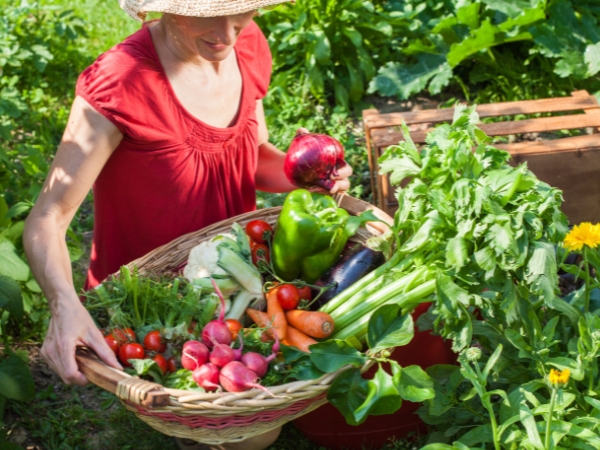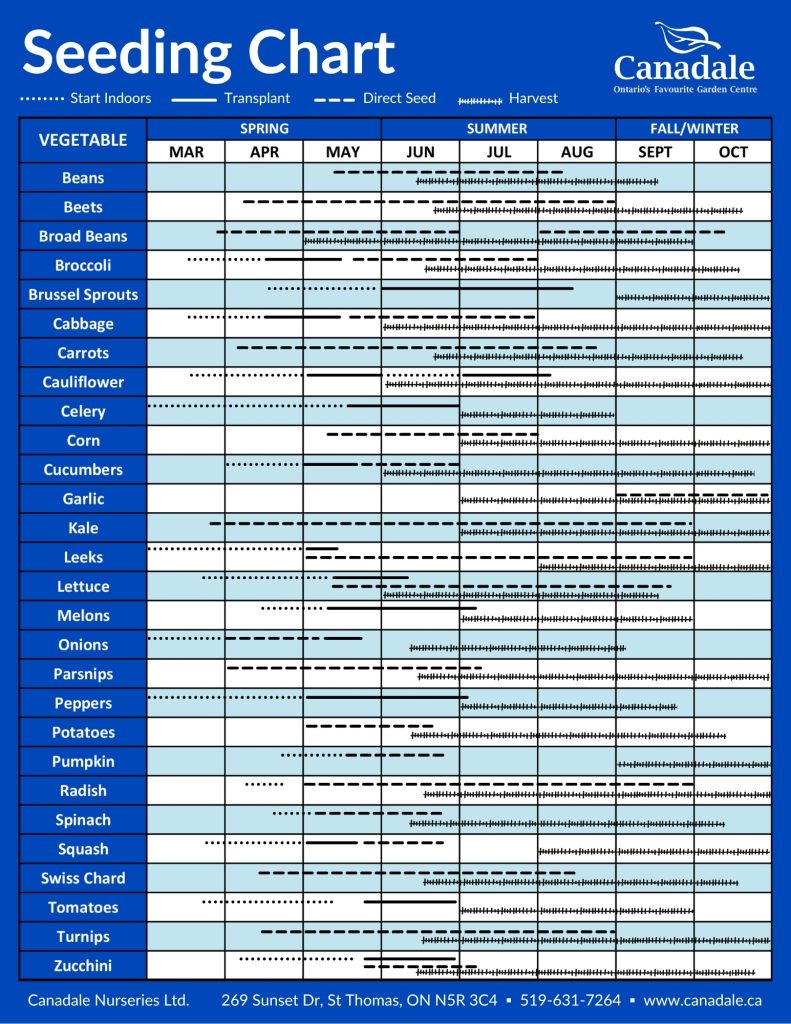
Planting Vegetables: A Guide to Getting Started
Garden Planning
Start by choosing a sunny spot—your vegetable garden should receive at least 5–6 hours of direct sunlight each day. Think about the vegetables your family enjoys eating and how much you’ll need for fresh eating, canning, or freezing. Be mindful of how much space you have available—some crops (like squash or tomatoes) require more room than others.
For a continuous harvest, try succession planting by staggering your sowing dates. It’s also a good idea to reserve space for fast-growing crops like radishes, lettuce, and spinach. And don’t forget: tall crops like corn or pole beans should be planted where they won’t shade smaller plants.
Starting From Seed
Some vegetables are best started directly in the ground. These include:
- Beans
- Beets
- Carrots
- Corn
- Peas
- Radishes
Always follow the seed packet instructions for depth and spacing. (For more tips on starting vegetables from seed, see our [Gardening From Seed] article.)
Soil Preparation
Great gardens begin with healthy soil. Spade the soil deeply to loosen it. If your soil is heavy or clay-based, add organic matter like peat moss and composted manure to improve drainage and structure. Mix in 1 kg of balanced garden fertilizer per 10 square metres, then turn the soil again and rake it smooth.
Pre-Planting Care
If you can’t plant your vegetables right away after purchasing, keep them in the shade and water them thoroughly. Choose a cool, cloudy day—or plant in the evening—for the least stress on your plants.
Planning Your Garden Layout
Make a list of the vegetables your family eats most often. Then determine how many plants you’ll need per person.
Be strategic with your layout: group plants with similar water and sunlight needs, and avoid overcrowding to reduce the risk of pests and disease.
| Vegetable | Plants/Feet Per Person | Notes |
|---|---|---|
| Beans (Bush) | 10–15 plants | Multiple sowings can extend the harvest. |
| Beans (Pole) | 5–10 plants | Needs support; produces over a longer period. |
| Beets | 10–15 plants | Good for both roots and greens. |
| Broccoli | 3–5 plants | Stagger plantings for extended harvest. |
| Cabbage | 2–4 plants | Can be stored long-term if kept cool. |
| Carrots | 10–20 ft row | Sow successively for a steady supply. |
| Corn | 10–15 plants | Plant in blocks for better pollination. |
| Cucumbers | 2–3 plants | Great for slicing or pickling. |
| Lettuce (Leaf) | 10–12 plants | Sow small amounts every 2–3 weeks. |
| Onions (Sets) | 15–20 sets | Ideal for cooking and storage. |
| Peas | 10–15 ft row | Best in cool weather; sow early and often. |
| Peppers | 3–5 plants | Both hot and sweet varieties available. |
| Potatoes | 10–15 plants | Store well through the winter. |
| Radishes | 10–20 ft row | Fast growing—ideal for succession planting. |
| Spinach | 10–15 plants | Cool weather crop; bolts quickly in heat. |
| Squash (Zucchini) | 1–2 plants | Very productive—don’t overdo it! |
| Tomatoes | 2–4 plants | Choose determinate for shorter harvest window. |
Harvest Planning
A successful garden isn’t just about planting—it’s also about knowing when to harvest. Each vegetable has its own timeline from seed to harvest, ranging from a few weeks to several months. Knowing when your crops will be ready helps you plan meals, stagger your plantings, and avoid waste.
For example, radishes can be ready in as little as 3–4 weeks, while tomatoes may take 70–85 days to mature. Cool-season crops like peas and spinach tend to be ready earlier in the season, while heat-lovers like peppers and squash peak in midsummer to fall.
We’ve put together a handy Vegetable Harvest Timeline to help you keep track of when to expect your crops. Use it as a guide to plan your garden layout, planting schedule, and harvest windows throughout the season.
How to Plant
Moisten the soil before planting, then allow it to dry just enough so it’s workable. As a general rule, plant seeds at a depth about three times their diameter. Tiny seeds should be covered with finely sifted soil, compost, or vermiculite. For transplants, gently separate any that are not in individual containers, keeping as much soil around their roots as possible.
Watering
Vegetables need consistent moisture to thrive. Water thoroughly after planting with a mild fertilizer solution to help them settle in. After that, water whenever the soil begins to dry out—preferably in the early morning. Focus on soaking the soil deeply rather than watering the leaves, which can encourage disease.
After-Planting Care
Weeds compete for water and nutrients, so remove them as soon as they appear. For easier weeding, water the area about an hour beforehand. Be careful not to disturb your vegetable roots when cultivating.
Keep an eye out for signs of insects or disease. If something seems off, bring a sample to your local garden centre—our knowledgeable staff is happy to help diagnose and provide solutions.
Vegetable Plants Growing Conditions for St. Thomas Ontario
Understanding the local growing conditions in St. Thomas, Ontario, is essential for a successful vegetable garden. The region’s climate and frost dates significantly influence planting schedules and crop selection.
Climate and Frost Dates
St. Thomas experiences a temperate climate with distinct seasons. The average last spring frost occurs around May 14, while the first fall frost typically happens in early October, providing a growing season of approximately 145 days.
Soil Conditions
Vegetables thrive in well-draining, fertile soils rich in organic matter. Conducting a soil test can determine pH levels and nutrient content, allowing for appropriate amendments to optimize soil health.
Planting Recommendations
Considering the local climate, here are some general planting guidelines for popular vegetables:
Cool-Season Crops: Vegetables like lettuce, spinach, and peas can be sown directly outdoors in early spring, as they tolerate cooler temperatures.
Warm-Season Crops: Crops such as tomatoes, peppers, and cucumbers should be planted after the last frost date, typically in late May, when the soil has warmed sufficiently.
For specific planting dates and crop recommendations tailored to St. Thomas, consult local resources or agricultural extensions.
By aligning your gardening practices with St. Thomas’s unique growing conditions, you can enhance the productivity and health of your vegetable garden.


